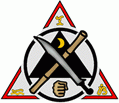Ying / Yang
written by Joseph L. Singleton Both an able-bodied person, who is a martial arts instructor, and a disabled person, who is a martial arts instructor must comprehend the knowledge, the philosophy, and the attitude of the martial arts to be a good instructor. They (the able-bodied and disabled instructors) do these in different ways. First, … Read more
